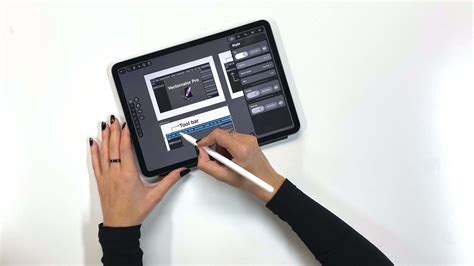The recent announcement of Apple’s revamped 11-inch and the brand-new 13-inch iPad Air has sparked a flurry of discussions within the tech community, particularly around the devices’ capabilities and limitations. User comments ranging from critiques of the iPad’s functionality as a development machine to praise for its utility in creative and executive workflows showcase the diverse perceptions of the iPad Air. While some users express frustration with Apple’s restrictions, others highlight the iPad’s versatility for tasks such as music creation, design work, and note-taking.
One user lamented Apple’s approach, criticizing the iPad for being treated as a ‘neutered consumption device’ despite its advanced hardware specifications. The debate over the iPad’s positioning – whether as a sophisticated productivity tool for professionals or a limited gadget for casual users – reflects the ongoing tension between Apple’s design choices and user expectations. The skepticism towards the iPad’s potential to serve as a comprehensive workstation, including tasks like coding and running macOS apps, underscores the device’s perceived limitations in certain technical domains.
Conversely, advocates for the iPad Air argue that it excels in specific use cases, such as content creation, note-taking, and remote work scenarios. The device’s seamless integration with productivity applications like Procreate, GoodNotes, and Notion amplifies its appeal to creative professionals seeking a portable and efficient workspace. Furthermore, the iPad Air’s performance enhancements, like the M4 chip and improved display, offer significant advantages for users engaged in tasks that demand high processing power and visual fidelity.
Discussions around the iPad Air also touch on broader themes of product lineup complexity and user segmentation. With comments highlighting the confusion surrounding Apple’s device offerings, particularly the varied iPad models and Apple Pencil compatibility, questions arise about the coherence of the company’s product strategy. The comparison between the iPad Pro and iPad Air, focusing on incremental differences in features like display technology and processing capabilities, accentuates the challenge of distinguishing distinct user segments within the iPad lineup.
The tension between user preferences for specific functionalities, such as Face ID versus Touch ID, or the desire for a macOS-like experience on the iPad, unveils the diverse needs and expectations of the Apple user base. The push for enhanced customization options, alternative operating systems, or expanded app compatibility underscores the demand for greater flexibility and control over the iPad’s functionality. While some users advocate for a more open system allowing broader software development and customization, others appreciate the streamlined experience and security benefits of Apple’s closed ecosystem.
As Apple continues to refine its iPad offerings, addressing user feedback and evolving technological trends, the debate over the iPad Air’s role – whether as a creative powerhouse or a limited utility device – remains nuanced and multi-faceted. The ongoing dialogue between users, developers, and tech enthusiasts reflects the dynamic landscape of tablet computing, where innovation, usability, and personal preference intersect to shape the future of portable productivity tools. Whether the iPad Air ultimately caters to creators, executives, educators, or casual consumers, its impact on the digital ecosystem is undeniable, opening new possibilities for work, creativity, and collaboration.
In conclusion, the discourse surrounding Apple’s iPad Air reveals the complex interplay between user expectations, technological innovation, and product positioning in the competitive tech market. As the boundaries between productivity tool and entertainment device blur, the iPad Air stands at the crossroads of utility and creativity, offering a versatile platform for diverse user needs. Whether it fulfills its potential as a transformative tool for professionals or remains a sophisticated gadget for everyday tasks, the iPad Air continues to spark conversations about the future of mobile computing and the evolving role of tablets in modern digital life.


Leave a Reply